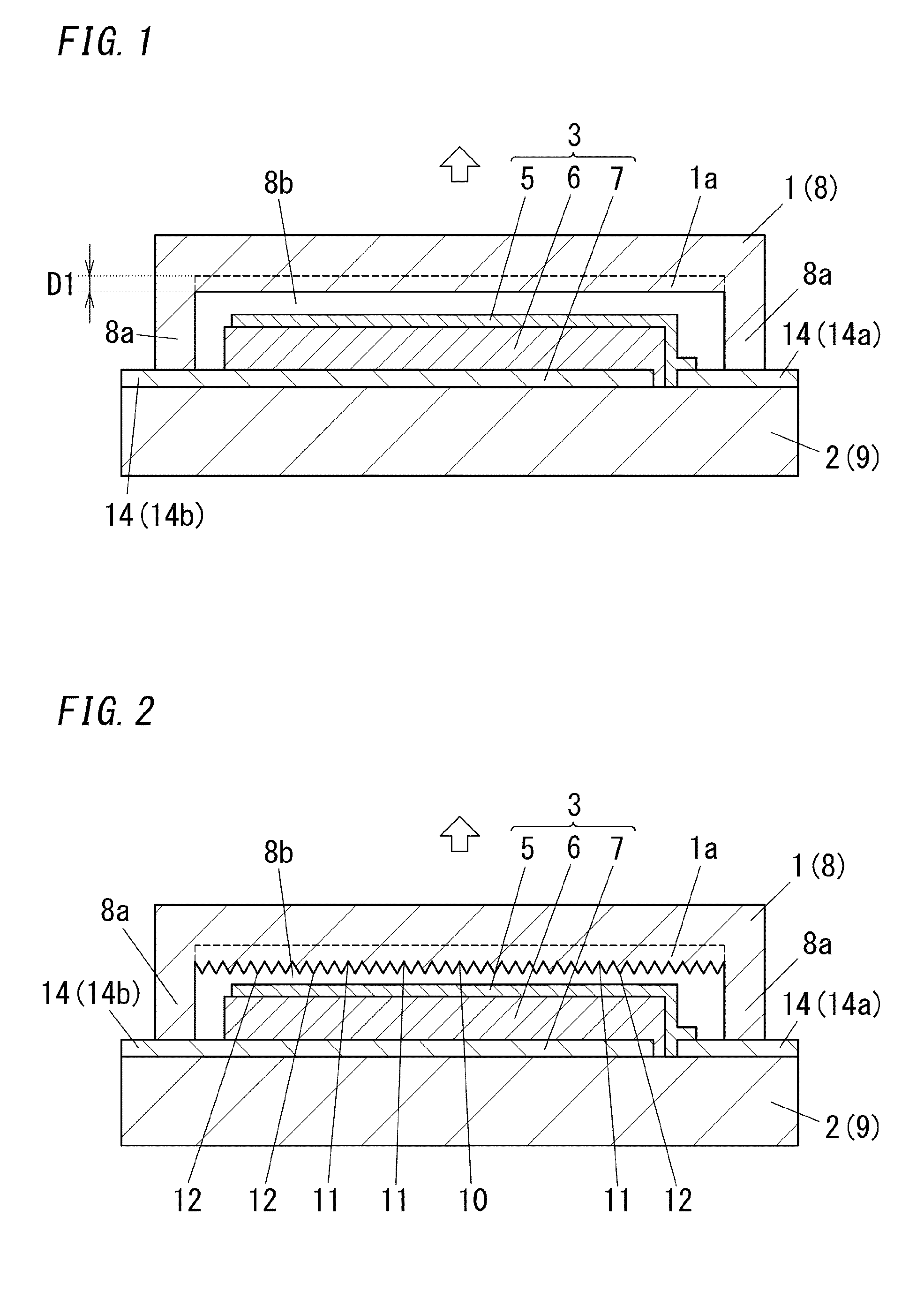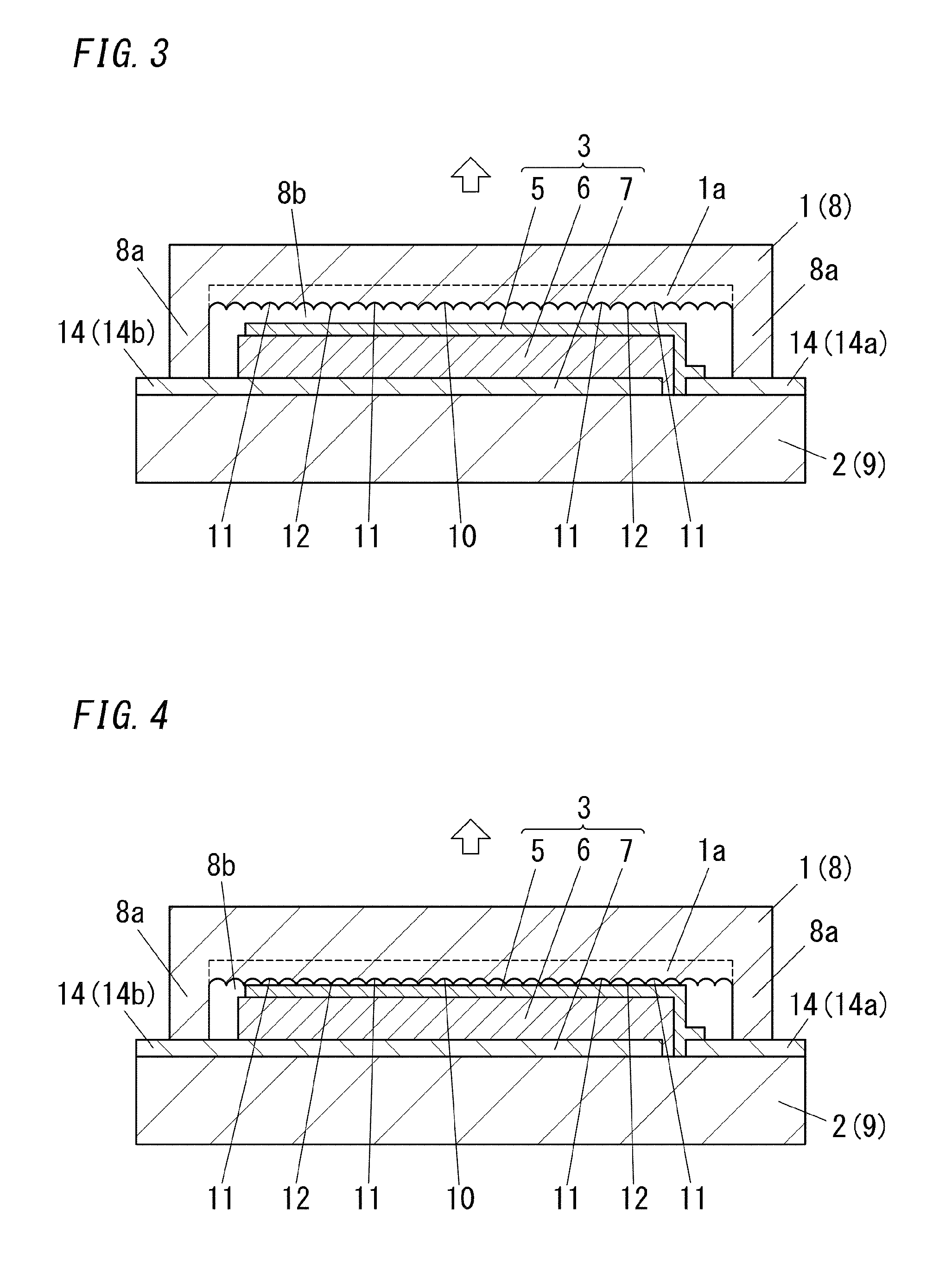Organic electroluminescence element and method of manufacturing the same
a technology light-emitting areas, which is applied in the direction of sustainable manufacturing/processing, thermoelectric devices, and final product manufacturing, etc., can solve the problems of difficult to effectively enhance the light-emitting efficiency of organic el elements having a large light-emitting area, and achieve enhanced light-outcoupling efficiency, effective light-outcoupling efficiency, and enhanced light-outcoupling efficiency
- Summary
- Abstract
- Description
- Claims
- Application Information
AI Technical Summary
Benefits of technology
Problems solved by technology
Method used
Image
Examples
Embodiment Construction
[0023]The present disclosure relates to an organic electroluminescence element (organic EL element). The organic EL element includes a first substrate 1 on a light extraction side of the organic EL element, a second substrate 2 opposite the first substrate 1, and an organic light-emitting laminate 3 between the first substrate 1 and the second substrate 2. The first substrate 1 includes a doped region 1a in the surface close to the organic light-emitting laminate 3, and the doped region 1a is doped with a dopant for causing change in a refractive index of the first substrate 1 to enhance a light-outcoupling efficiency. In this organic EL element, the doped region 1a is formed in the first substrate 1 on the light extraction side, and hence total reflection of light emitted from a light-emitting layer can be suppressed. Therefore, the light-outcoupling efficiency can be easily and effectively improved.
[0024]FIG. 1 shows an example of the organic electroluminescence element (organic E...
PUM
 Login to View More
Login to View More Abstract
Description
Claims
Application Information
 Login to View More
Login to View More - R&D
- Intellectual Property
- Life Sciences
- Materials
- Tech Scout
- Unparalleled Data Quality
- Higher Quality Content
- 60% Fewer Hallucinations
Browse by: Latest US Patents, China's latest patents, Technical Efficacy Thesaurus, Application Domain, Technology Topic, Popular Technical Reports.
© 2025 PatSnap. All rights reserved.Legal|Privacy policy|Modern Slavery Act Transparency Statement|Sitemap|About US| Contact US: help@patsnap.com



